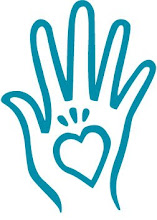Our office continues to see an influx of clients and that may not be entirely because people are being assaulted more often. They could just finally feel ready to report their assault. But, it has been proven by many sociologists that in times of economic hardship crime rates tend to rise. But, before we can look at the present workings of Sexual Assault centers I think it's important to look back at the history of the movement.
Women's protests for right began in the 1920's when we were struggling to have rights. Once we received those rights we became an automatic target for violence. Why? Because we were asking to be seen equal to that of men, and some of them have been pissed about it ever since that moment. Women's organized protests against violence began in the late 1970's in England with Take Back the Night Marches. These were formed as a way to educate people about the violence women were receiving as they walked the streets at night. Eventually, the women of England began to coordinate with the women of the United States. The first Take Back the Night Marches took place in 1978 in New York City and San Francisco. SAAM initially was held in October along with Domestic Violence Month, but eventually sexual assault awareness groups wanted to have month focuses it's entirety on Sexual Assault. So it was moved to the month of April.
Which Brings us back to this month. We have a variety of activities we are assisting with during this month. Here's a list in case anyone wants to come check it out.
4/4/09 UMW Multicultural Fair @ University of Mary Washington 9am-5pm
4/6/09 Anarcha-Feminist Workshop @ University of Mary Washington Monroe 203 7pm
4/8/09 Take Back the Night Ralley @ University of Mary Washington 7pm-9pm
4/25/09 Caroline Family Fun Day 9am-3pm Caroline Middle School Bowling Green, VA
4/26/09 Stafford Family Fun Day 9am-4pm McDuff Park Fredericksburg, VA

